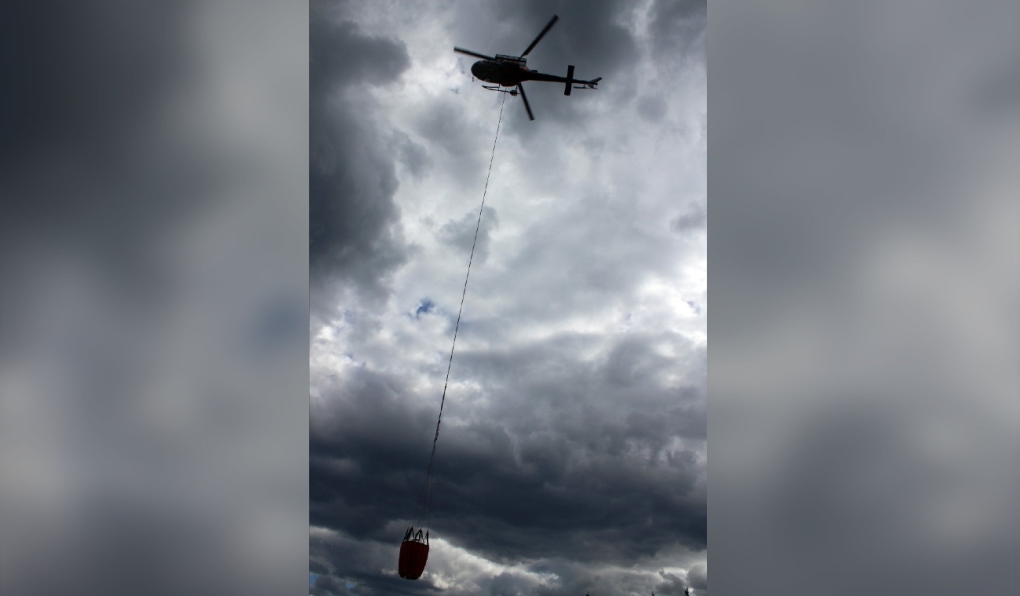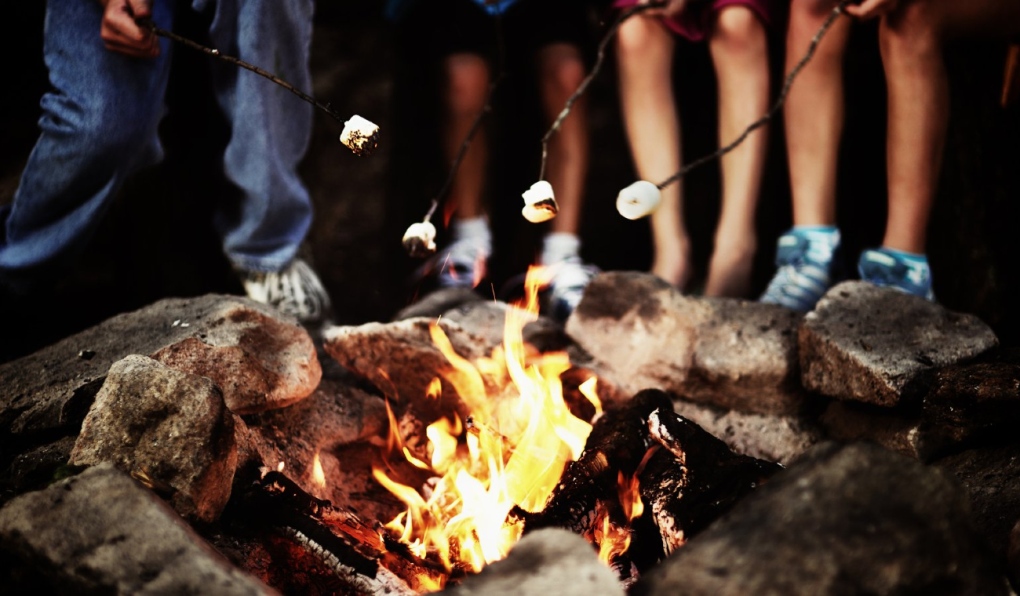No new fires reported in the northeast, northwest prepares for more potential starts
There 27 active wildfires in the Northeast Region and most of the area is no longer consider at severe risk for forest fires, according to Saturday's update from Aviation, Forest Fire and Emergency Services (AFFES).
Of these active fires, six are under control and 21 are being observed, the report said. No new fires were reported in the Northeast Region Saturday.
“The most southern section of the region from North Bay to Port Severn and east to Carleton Place has a low to moderate fire hazard value,” said emergency officials.
Cochrane 7 remains the largest and most significant fire in the region – however it has been under control for the past few days. Cochrane 7, confirmed on June 2, is located northeast of Lake Abitibi and has burned 37,742 hectares.
- Download the CTV News app now and get local alerts on your device
- Get local breaking news and updates sent to your email inbox
NORTHWEST REGION
There 40 active wildfires in the Northwest Region with wildland fire hazard mainly low to moderate across the western half of the region, and moderate to high across the eastern half of the region, according to the AFFES update.
Of these active fires, five are not under control, four are being held, two are under control and 29 fires are being observed.
In Ontario, a fire classified as ‘being observed’ is being monitored to allow the ecological benefits of wildland fire to take place as it would in the natural environment without human intervention, the Ministry of Natural Resources and Forestry explained in a recent tweet.
“Initial attack crews have called 4 fires out in the past 24 hours,” said emergency officials, in the update.
“There were four new fires confirmed in the Northwest Region by the late afternoon.”
Red Lake 50 and Red Lake 51 were both called out on Saturday after being confirmed.
Nipigon 57 and Nipigon 58 are located approximately 41.2 kilometres and 48.5 kilometres southeast of Beardmore respectively, near Wintering Lake. Nipigon 57 is currently being held and Nipigon 58 is not yet under control. Both fires measure 0.1 hectares.
Sioux Lookout 33 remains the largest and most significant fire in the region – it is still not under control. Sioux Lookout 33 is located on the western edge of Wabakimi Provincial Park and is 60,394 hectares in size.
 Helicopter bucketing operations are one form of aerial fire suppression used by Aviation, Forest Fire and Emergency Services to control active forest fires in Ontario. (Supplied)“Crews continue to establish hose lines while helicopter bucketing operations continue to work priority areas on the fire,” reads the report.
Helicopter bucketing operations are one form of aerial fire suppression used by Aviation, Forest Fire and Emergency Services to control active forest fires in Ontario. (Supplied)“Crews continue to establish hose lines while helicopter bucketing operations continue to work priority areas on the fire,” reads the report.
Sioux Lookout 44, located on the west side of Lake St. Joseph is now being held at 6,730 in size.
Nipigon 19 is located northwest of Ogoki Lake and Red Lake 28 is located 40 kilometers North of Lac Seul First Nation are still not under control and have grown to 10,182 and 19,177 hectares respectively – with crews continuing to establish hose lines working along side helicopter bucketing.
Emergency officials expect more fire starts in the region in the coming days.
Temperatures in many parts of the northwest are expected to climb to the 28-30°C range over the next week, according to Environment Canada forecasts.
FIRE BANS
The Restricted Fire Zone (RFZ) previously in place for the entire Fire Region of Ontario was lifted on July 11 and northeastern municipalities do not have fire bans currently in place.
 An undated photo of people roasting marshmallows over a campfire. (Image courtesy of Ontario Forest Fires/Twitter)“Lifting the RFZ does not mean we can let our guard down when it comes to preventing human-caused fires,” said emergency officials.
An undated photo of people roasting marshmallows over a campfire. (Image courtesy of Ontario Forest Fires/Twitter)“Lifting the RFZ does not mean we can let our guard down when it comes to preventing human-caused fires,” said emergency officials.
“We all need to remain vigilant and keep safety top of mind when having outdoor fires.”
THE 2023 FOREST FIRE SEASON
The 2023 forest fire season has been a busy one in Ontario, with a total of 450 confirmed fires reported so far this year, above the 10-year average of 412 fires for the same time period – and significantly more than the 148 total fires reported in 2022.
STAY UP-TO-DATE
CTVNewsNorthernOntario.ca will continue to monitor the ever-changing situation and will provide new information as it becomes available. Check back often for updates.
For a closer look at fire hazard conditions in your area, view the Ontario Forest Fire Info Map online here.
CTVNews.ca Top Stories

Firefighters battle to control devastating Los Angeles wildfires as ferocious winds calm somewhat
A fast-moving fire broke out in the Hollywood Hills on Wednesday night, threatening one of Los Angeles' most iconic spots as firefighters battled to get under control three other major blazes that killed five people, put 130,000 people under evacuation orders and ravaged communities from the Pacific Coast to inland Pasadena.
Canada could impose tariffs on U.S. steel, orange juice in response to Trump threat
Canadian officials are narrowing a list of American products to target in the event the federal government must respond to U.S. tariffs on Canadian goods, CTV News has confirmed.
Can the U.S. really make Canada the 51st state?
Talk of Canada becoming the 51st American state has raised an existential question on this side of the border: Could it be done? Could the maple leaf make way to the stars and stripes? According to several experts, it may be possible, but not painless.
'True when I said it, true today': former Canadian PM Harper pushes back against Trump on social media
Former prime minister Stephen Harper doesn’t find U.S. president-elect Donald Trump’s jibes about Canada becoming the 51st U.S. state very amusing.
Convicted Jan. 6 rioter arrested as fugitive in Whistler, B.C.
An American citizen convicted of participating in the Jan. 6, 2021, riot on Capitol Hill who said he was seeking asylum in Canada has been arrested as a "fugitive from U.S. justice," according to authorities.
NEW Tipping guide to Canada: When, where and how much to tip for restaurants, taxis and more
CTVNews.ca has created an entirely unofficial guide to tipping in Canada to help visitors, newcomers and curious Canadians navigate the shifting social norms of when, where and how much to tip.
'On the front line': Quebec planes and B.C. helicopters battle L.A. wildfires
Water-bombing pilots and crews from Quebec and a British Columbia company have been grappling with high winds and heavy turbulence in the battle against massive Los Angeles wildfires, as Canadians with homes in the area are forced to flee fast-moving flames.
Canadians want Ottawa and provinces to team up against Trump tariff threats: Nanos survey
A majority of Canadians want Ottawa and the provinces to team up against U.S. tariff threats, according to a new survey by Nanos Research.
Attack on Chad's presidential palace leaves 19 dead
An attack on Chad's presidential palace left 18 assailants dead and six in custody, with one soldier killed and three wounded, state media reported Thursday.
































